Hydrangeas’ bouncing white, blue, and pink blooms are some of the most popular, versatile, and stunning florals you can choose for your yard. These delightful flowers have made something of a reputation for themselves, making Utah’s homeowners believe that they are too difficult to manage in the ever-changing climate.
But these gorgeous plants can grow and even thrive in Utah under the right conditions. We are experts on finding the right plants for your Utah yard, and we’ve compiled our tips, tricks, and inspirational ideas for how to grow the best hydrangeas in Utah.
Hydrangeas are absolutely gorgeous flowering shrubs that can add stunning pops of color to any garden. With their large, showy blooms, hydrangeas are one of the most popular landscape plants But many wonder if hydrangeas can thrive in Utah’s unique climate
The short answer is yes – with the right care and preparation, hydrangeas can flourish in the Beehive State. While Utah’s arid environment does present some challenges, there are ways to help hydrangeas beat the heat.
Why Hydrangeas Struggle in Utah
Utah can be a tough place for hydrangeas to grow successfully Here are some of the main reasons these flowering shrubs have a hard time in Utah’s climate
-
Low humidity – Hydrangeas prefer more humid air and Utah’s dry climate can cause moisture stress.
-
Lack of rainfall – Hydrangeas need consistent moisture and Utah’s low annual rainfall often leads to drought conditions.
-
Harsh sun – The intense sun at Utah’s high elevation can easily burn hydrangea leaves and blooms.
-
Alkaline soil – Hydrangeas prefer slightly acidic soil in the pH range of 5.2-5.5. Utah’s soils are naturally alkaline.
-
Extreme winters – While hydrangeas can handle some cold, Utah’s frigid winter temperatures may damage or kill them.
-
Late spring frosts – Hydrangea buds and blooms are prone to damage from Utah’s late frosts in early spring.
Choosing the Right Varieties
Luckily, plant breeders have developed some exceptional hydrangea varieties that can overcome Utah’s climate challenges:
-
Endless Summer – These re-blooming hydrangeas bloom on both old and new wood, so you still get flowers even after harsh winters. They have gorgeous blue or pink blossoms.
-
Limelight – A panicle hydrangea unaffected by Utah’s arid air and alkaline soil. It has bright lime-green blooms.
-
Little Lime – A dwarf Limelight variety perfect for containers. It only grows to 5 feet tall.
-
Incrediball – Massive 12-inch blooms on strong stems make this a real showstopper. It reblooms reliably and tolerates heat.
-
Cityline – Bred to be extra cold hardy and rebloom vigorously. ‘Paris’ has white blooms while ‘Vienna’ has red or blue.
-
Smooth Hydrangea – A native oakleaf hydrangea hardy to -40°F. Has white cone-shaped blooms.
Providing the Right Growing Conditions
The key to success with hydrangeas in Utah is giving them the ideal growing environment:
-
Morning sun – Plant in a spot with morning sun but afternoon shade. East-facing locations are best.
-
Wind protection – Shield plants from harsh winds which damage blooms and dry out the shrub. Use fences, walls or hedges as windbreaks.
-
Consistent water – Deeply soak the root zone 1-2 times per week during summer. Mulch to retain moisture.
-
Acidic soil – Incorporate peat moss into the soil to lower the pH into the ideal 5.2-5.5 range. Use an acidifying fertilizer.
-
Winter protection – In fall, mound soil or mulch over the base as insulation from winter dieback. Remove in early spring.
-
Summer pruning – Prune immediately after blooming to avoid removing next year’s flower buds.
Planting and Maintaining Hydrangeas
Follow these tips when planting and caring for hydrangeas in Utah:
-
Plant in spring or fall, avoiding summer’s heat. Space plants 3-6 feet apart depending on variety.
-
Dig a wide hole and mix in compost or peat to enrich the soil. Set at the same depth as it was growing in the nursery pot.
-
Water deeply 2-3 times per week the first year to establish extensive roots.
-
Apply 2-3 inches of organic mulch to retain moisture and reduce weeds. Replenish as needed.
-
In early spring, apply an acidic fertilizer made for hydrangeas per package directions.
-
Prune dead stems immediately after flowering and cut oldest stems to the ground to encourage new growth.
-
For blue flowers, apply aluminum sulfate fertilizer to acidify the soil. For pink, add lime to raise the pH.
-
In fall, insulate the base with mounded soil or mulch to protect from winter damage.
Getting the Location Right
When it comes to planting location, choose spots that receive morning sunlight but afternoon shade. East-facing sites are ideal. Planting on the south side of buildings or trees provides protection from intense western sun.
Avoid open, windy areas that could damage the blooms and dry out the shrubs. Use fences, walls or hedges as windbreaks if needed. Space plants 3-6 feet apart depending on variety size. Dig wide planting holes and amend the soil with compost or peat moss.
Watering Hydrangeas in Utah’s Arid Climate
Consistent moisture is key to hydrangea health in Utah’s arid climate. Water the plants deeply 2-3 times per week during the first year after planting to establish deep roots. Add 2-3 inches of organic mulch around the base of plants to help retain soil moisture.
As plants mature, a weekly deep watering of about 1-2 inches is usually sufficient. Soak the entire root zone thoroughly when watering. Use drip irrigation or soaker hoses to avoid wetting the foliage. Drooping leaves or wilting are signs that hydrangeas need more water.
Getting the Soil Right for Hydrangeas
One of the most important steps to growing hydrangeas in Utah is amending the naturally alkaline soil to create the ideal acidic conditions they prefer. Shoot for a pH between 5.2 and 5.5.
When preparing planting holes, mix in several inches of sphagnum peat moss, pine bark fines, or compost. These organic materials help acidify the soil. Continue to top-dress around plants with acidic compost during the growing season.
Also apply aluminum sulfate, a fertilizer that lowers soil pH, per package directions. For established plants, sprinkle around the root zone in early spring and again in late summer. Avoid over-application of aluminum sulfate as it can damage roots.
Protecting Hydrangeas Through Harsh Utah Winters
Hydrangeas can survive Utah’s cold winters with a little extra protection. In fall, mound a 6-8 inch layer of insulating mulch or soil around the base of the plants. Leaves, straw or pine needles work well.
Wrap plants with burlap or frost blankets if temperatures will dip below -10°F. Remove any wrappings by early spring so plants don’t push new growth too early. Prune only after flowering since hydrangeas set next year’s bloom buds in fall.
Choose more cold hardy hydrangea species like Smooth hydrangeas and Endless Summer varieties. Avoid planting in open, windy sites which can desiccate plants in winter. With proper care, hydrangeas will return reliably even after Utah’s harshest winters.
Getting Gorgeous Hydrangea Flowers
With the right conditions, hydrangeas will reward Utah gardeners with their signature lush blooms. To encourage the best flower production:
-
Prune immediately after flowering by removing dead stems and cutting oldest stems to the ground. This encourages new growth that will bloom next year.
-
For blue flowers, keep the soil pH low by applying aluminum sulfate fertilizer. Pink blooms prefer higher pH soil amended with lime.
-
Prevent wilting and drought stress by watering deeply 2-3 times per week. Consistent moisture equals more flowers!
-
Apply fertilizer made specifically for hydrangeas in early spring and again in midsummer. This provides nutrients for bloom development.
-
Protect plants from intense sunlight and harsh winds which can damage delicate hydrangea flowers.
Enjoying Hydrangeas in Utah’s Unique Climate
While it takes a bit more effort to pamper hydrangeas in Utah’s climate, the rewards are well worth it. The variety of hydrangea bloom colors, sizes and shapes means you can find just the right ones to complement your garden. Follow these tips and you’ll be able to grow, overwinter and enjoy gorgeous hydrangeas for years of outstanding beauty.

How to Plant Hydrangeas in Utah for Long-Lasting Results
First, choose your location for your hydrangea, as your location will inform you of the breed of plant you choose and any preparation steps you might need to take. Depending on the variety, you might need more alkaline soil, more shade, better drainage, or more water.
Make sure that the spot you choose matches the specific needs of the hydrangea variety you choose. Then, amend your soil as necessary. Remember, some breeds of hydrangea will change color based on the acidity of the soil, so make sure you understand the specifics of your variety.
Drainage is also important- while most varieties prefer moist soil, they also need excellent drainage. Prune your hydrangeas after they bloom, but make sure you aren’t cutting next year’s flowers. Fertilize in the early spring with a slow-release fertilizer. In the winter, mulch around the base of more delicate varieties, like the Nikko Blue. Keep an eye on your hydrangeas, and with a little effort, you can have the gorgeous, full blooms these beauties have to offer.
What Are the Best Hydrangeas for Utah?
These hydrangeas are known for their large white or pale pink flowers that pop off during the summer. Blooming with full, rounded clusters, they are long-lasting flowers that are easy to dry and use throughout the year. Like Panicle Hydrangeas, Smooth Hydrangeas are low maintenance and tolerate Utah’s extreme temperatures, making them an easy choice for Utah gardens.
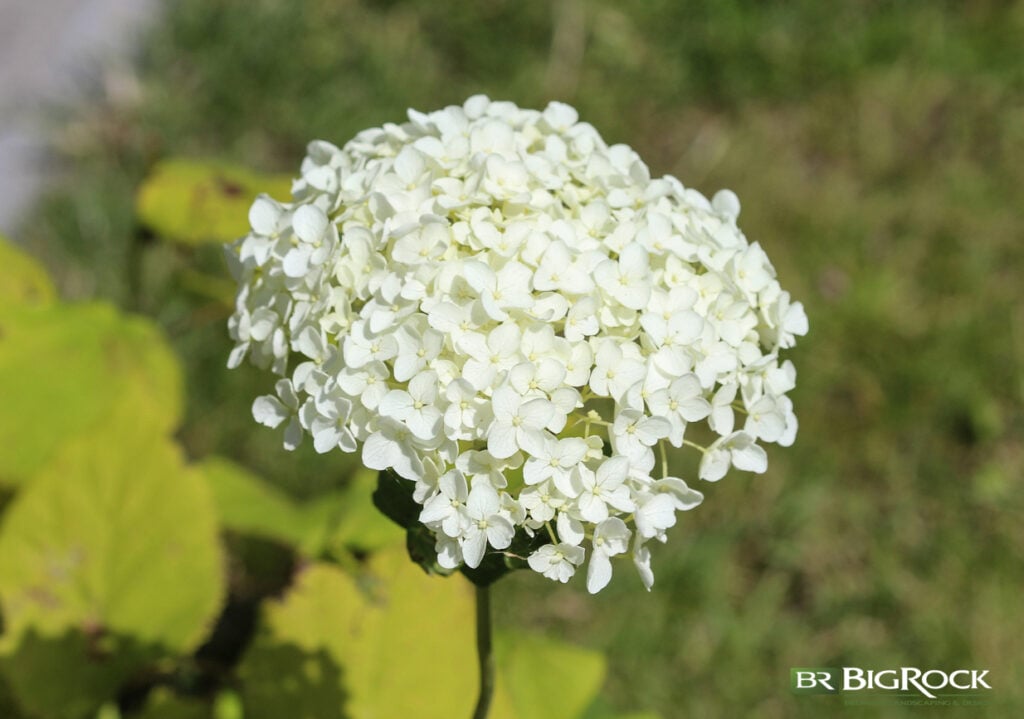
This breed of hydrangea includes variations like Limelight, Fire Light, and Tardiva. Once established, this variation is relatively drought tolerant, perfect for Utah’s hot summers. These voluminous blooms are low maintenance and grow fuller with more sun—again, a perfect fit for long hot days.
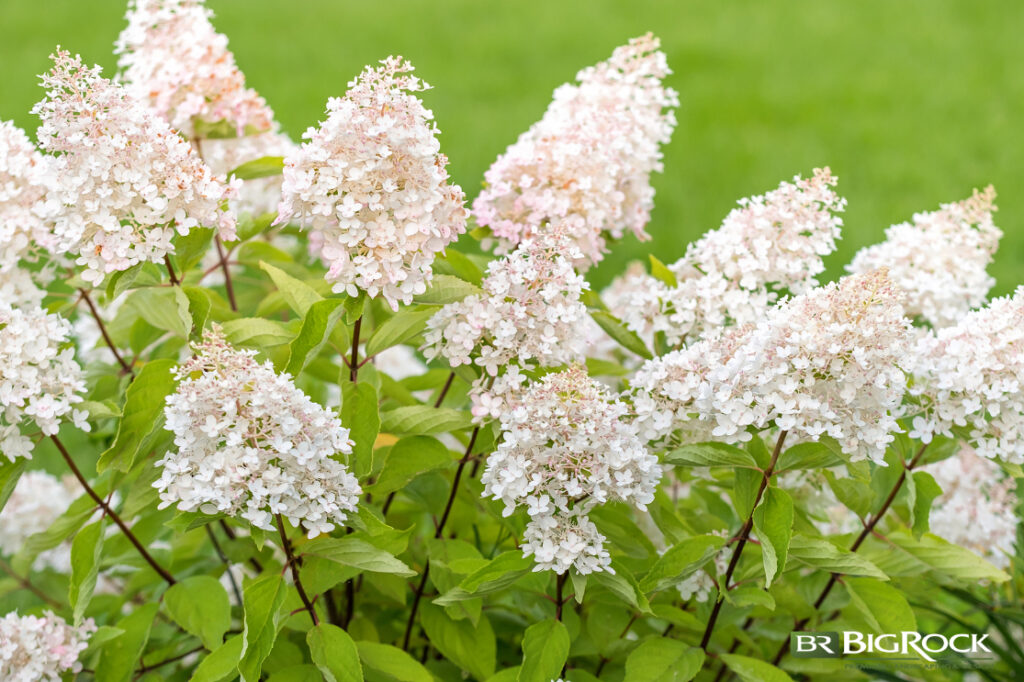
With some of the most striking fall colors, including red, orange, and purple leaves, as the temperatures drop, the Oakleaf Hydrangea boasts showy white blooms. This plant flowers in the late spring and early summer, with flowers that start white and turn pink as they age. While this variation tolerates low water, it still prefers consistent moisture, and you’ll get your best results by keeping the soil moist. Tolerating colder temps, this might be the best hydrangea for your yard if you are in the northern part of the state or higher elevations.
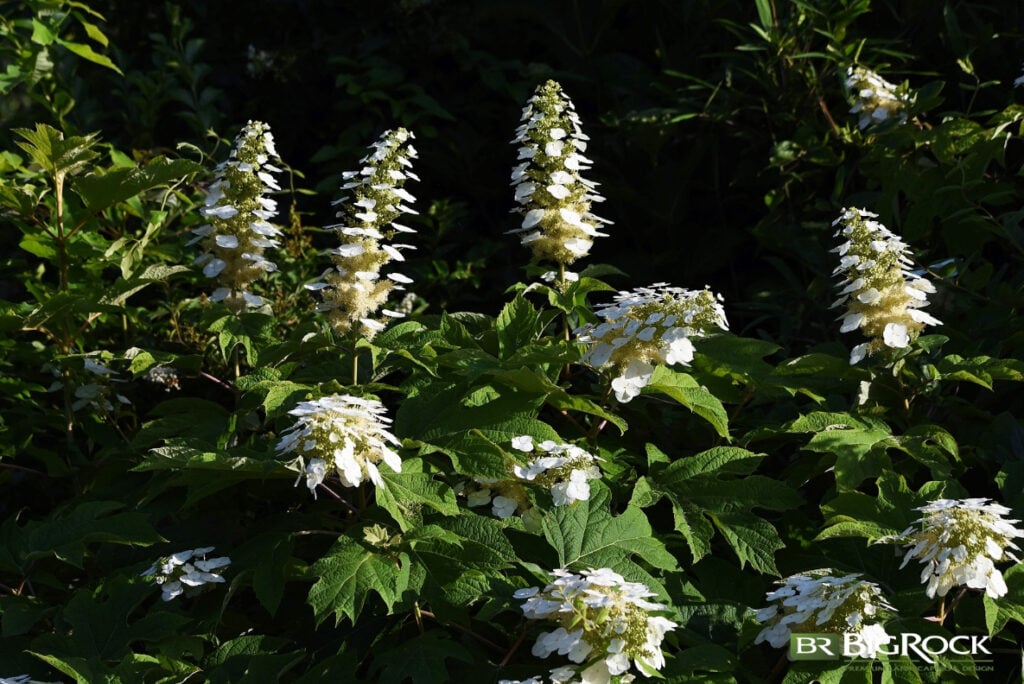
Climbing Hydrangeas offer many benefits to Utah gardeners. With the right training, they will climb walls and trellises. They are also more shade tolerant than other plants, making them a great choice for the northern and eastern sides of the home. The dark green foliage offers a stark background for the delicate white clusters, and once established, they require very minimal maintenance.
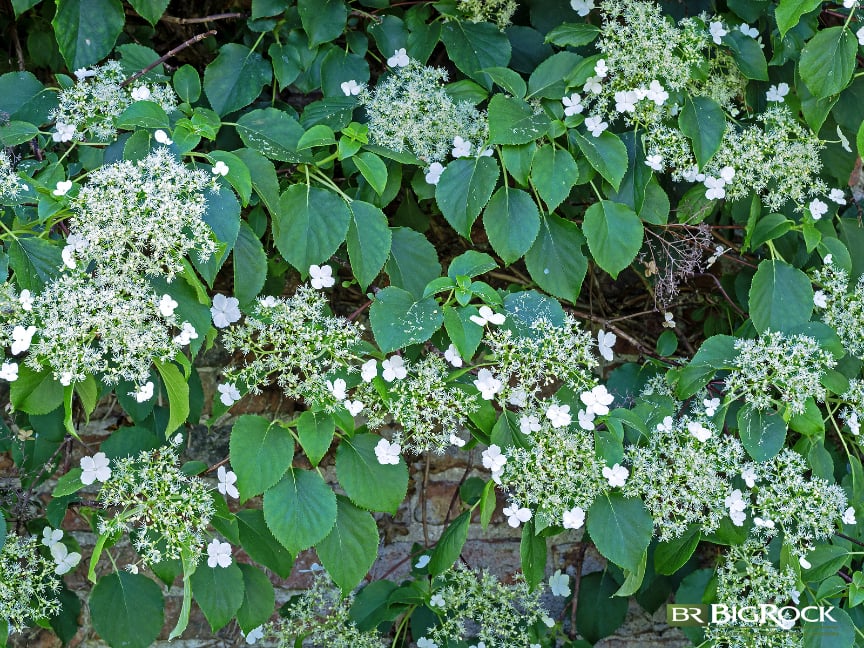
This variety might be a little more delicate than the others, but its brilliant bright blue blooms are absolutely worth a little TLC. Nikko Blue Hydrangeas do best in partial shade and do better when protected from direct afternoon sun. They also might require mulching around the base to protect the roots from frost in colder areas of the state, but overall tolerate sun and cold well. To maintain the blue color of this hydrangea, plant (or amend the soil) to be more acidic than alkaline.
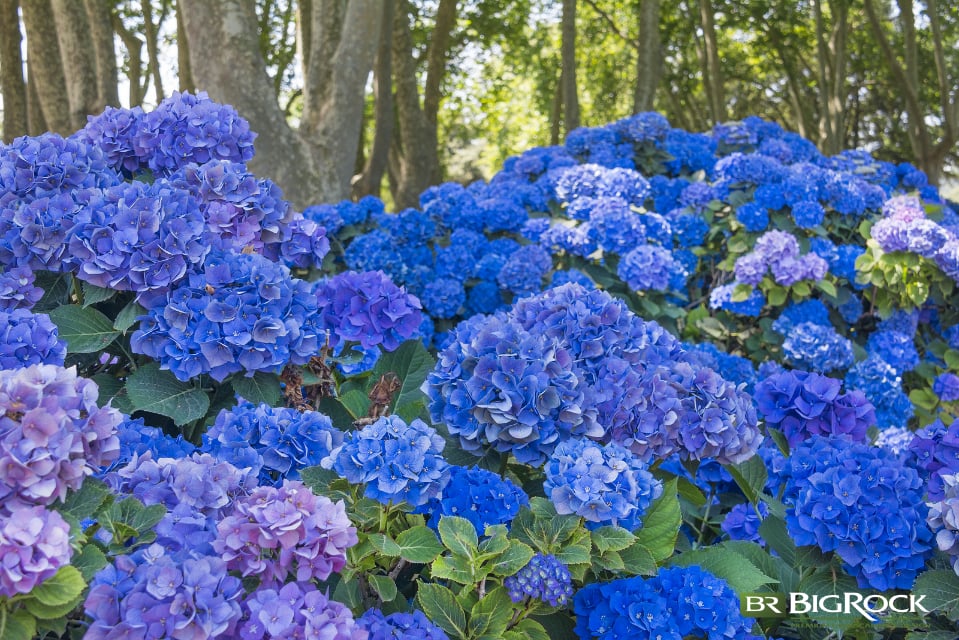
Growing Hydrangeas in Utah
FAQ
Can hydrangeas survive in Utah?
Do not worry; even with these extra steps, hydrangeas can easily flourish in Utah’s climate. – Find the right spot. Partial shade is best to help avoid the harsh afternoon sun, but there should be enough sun to help the flowers bloom. – Choose a hearty variety.
How to care for hydrangeas in Utah?
To keep the leaves from wilting, never let the soil get too dry. In addition, native Utah soils need amendments to keep hydrangeas healthy. Shrubs planted in light or sandy soil need to be fertilized in spring or late winter. For best results, have a soil test done before feeding your flowering shrubs.
Where should you not plant hydrangeas?
Hydrangeas should be planted in a location that offers a balance of sun and shade, with well-draining soil. Avoid planting them in areas with full, intense sun all day, especially in hotter climates, as this can cause wilting and the need for more frequent watering. Also, avoid planting them in areas with heavy, wet clay soil that doesn’t drain well, as this can lead to root rot.
What is the easiest flower to grow in Utah?
Daylilies
Daylilies are a dream for beginners. Known for their hardy nature, they can survive Utah’s cold winters and hot summers, making them a perfect choice. These perennials boast vibrant, trumpet-shaped blooms that come in nearly every color, from sunny yellow to deep burgundy.
